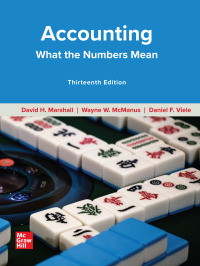Calla Company produces skateboards that sell for $67 per unit. The company currently has the capacity to produce 95,000 skateboards per year, but is selling 81,800 skateboards per year. Annual costs for 81,800 skateboards follow. $ 965, 240 Direct materials Direct labor overhead Selling expenses Administrative expenses 621, 680 958, 000 545, 000 479,000 $3, 568, 920 Total costs and expenses A new retail store has offered to buy 13,200 of its skateboards for $62 per unit. The store is in a different market from Calla's regular customers and would not affect regular sales. A study of its costs in anticipation of this additional business reveals the following: Direct materials and direct labor are 100% variable. 40 percent of overhead is fixed at any production level from 81,800 units to 95,000 units; the remaining 60% of annual overhead costs are variable with respect to volume. Selling expenses are 60% variable with respect to number of units sold, and the other 40% of selling expenses There will be an additional $2.00 per unit selling expense for this order. Administrative expenses would increase by a $820 fixed amount. are fixed. Required: Prepare a three-column comparative income statement that reports the following: a. Annuel income without the special order. b. Annual income from the special order. c. Combined annual income from normal business and the new business. (Do not round your Intermediate calculations. Round your cost and expenses to nearest whole number.) Required: Prepare a three-column comparative income statement that reports the following: a. Annual income without the special order. b. Annual income from the special order. c. Combined annual income from normal business and the new business. (Do not round your Intermediate calculatlons. Round your cost and expenses to nearest whole number.) CALLA COMPANY COMPARATIVE INCOME STATEMENTS Additional Volume Combined Normal Volume Total Costs and expenses Total costs and expenses Operating income Haver Company currently produces component RX5 for its sole product. The current cost per unit to manufacture the required 61,000 units of RX5 follows. Direct materials Direct labor overhead Total costs per unit $ 5.00 9.00 10.00 24.00 Direct materials and direct labor are 100% variable. Overhead is 80% fixed. An outside supplier has offered to supply the 61,000 units of RX5 for $19.00 per unit. Required: 1. Calculate the incremental costs of making and buying component RX5. Total incremental costs of: Buying the units Making the units Total costs Should the company continue to manutacture the part, or should it buy the part trom the outside supplier? Marinette Company makes several products, including canoes. The company has been experiencing losses from its canoe segment and is considering dropping that product line. The following information is available regarding its canoe segment. (Leave no cells blank. Enter zeros where approprlate.) MARINETTE COMPANY Income Statement-Canoe Segment $2, 600, 000 Sales Variable costs Direct materials Direct labor Variable overhead Variable selling and administrative S 570, 000 620, 000 420, 000 260, eee 1,870, e00 730, 000 Total variable costs Contribution margin Fixed costs Direct Indirect Total fixed costs 495, 000 420, 000 915, 000 $ (185, 000) Net income 1. If canoes are discontinued, calculate the net income lost or gained. Keep the department Eliminate the de partment Sales Expenses Total expenses Net inrame neel 1. If canoes are discontinued, calculate the net income lost or gained. Keep the department Eliminate the de partment Sales Expenses: Total expenses Net income (loss) 2. Should management discontinue the manufacturing of canoes? O No O Yes Phoenix Company can invest in each of three cheese-making projects: C1, C2, and C3. Each project requires an initial investment of $234,000 and would yield the following annual cash flows. (Py of $1, EV of $1 PVA of $1, and EVA of $1) (Use approprlate factor(s) from the tables provided.) C2 C1 C3 $182, 000 62,000 $ 14,000 110, 000 170, 000 $294, 000 $ 98, e00 98, 000 98. 00e Year 1 Year 2 Year 3 50, 000 $294, eee $294, 000 Totals (1) Assume that the company requires a 10% return from its investments. Using net present value, determine which projects, if any, should be acquired. (Negative net present values should be Indicated with a minus sign. Round your answers to the nearest whole dollar.) Project C1 Intial Investment Chart Values are Based on Year Cash Inflow PV Factor Present Value x. 2. Project C2 Initial Investment Year Cash Inflow PV Factor Present Value Project C2 Initial Investment PV Factor Year Cash Inflow Present Value 1. 3. Project C3 Initial Investment Year Cash Inflow PV Factor Present Value 1













